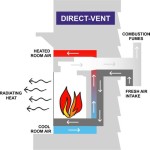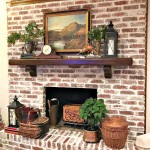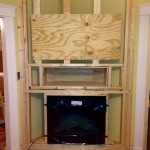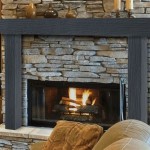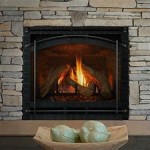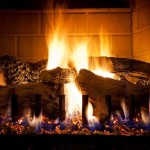Fireplace Screens: Ensuring Child Safety
Fireplaces provide warmth and ambiance to a home, especially during colder months. However, they also present potential hazards, particularly for young children. The open flame and hot surfaces of a fireplace can cause severe burns and other injuries. Therefore, implementing adequate safety measures, such as installing a childproof fireplace screen, is crucial for maintaining a safe environment for children.
Fireplace screens are designed to prevent children from accessing the fire and hot surfaces of the fireplace. These screens act as a physical barrier, reducing the risk of burns, fires, and other accidents. Choosing the right type of screen and installing it correctly is paramount to maximizing its effectiveness in safeguarding children.
This article aims to provide comprehensive information on fireplace screens, with a specific focus on childproofing. It will discuss various types of screens, their features, and factors to consider when selecting a childproof option. Additionally, it will address installation techniques and maintenance practices to ensure the continued safety and effectiveness of the fireplace screen.
Types of Fireplace Screens
Fireplace screens are available in a variety of designs and materials, each offering different levels of protection and aesthetic appeal. Understanding the different types of screens is the first step in selecting one that effectively childproofs a fireplace.
Single-Panel Screens: These are the most basic type of fireplace screen. They consist of a single, flat panel of mesh or decorative metal. Single-panel screens are easy to install and relatively inexpensive. However, they offer limited protection compared to other types of screens. Because they sit directly in front of the fireplace opening, children can easily reach around the sides or top of the screen to touch the fire or hot fireplace surfaces. Therefore, single-panel screens are generally not recommended as the sole childproofing solution.
Multi-Panel Screens: These screens consist of three or more panels that are hinged together. The side panels can be angled to provide a more comprehensive barrier around the fireplace opening, making it more difficult for children to access the fire. Multi-panel screens are often more stable than single-panel screens and can be adjusted to fit different fireplace sizes. They offer a better level of protection but still may not be completely foolproof, especially for determined toddlers.
Free-Standing Screens: These screens stand independently in front of the fireplace, relying on their own weight and stability to remain in place. They typically feature a sturdy frame and a mesh or metal screen. Free-standing screens are generally more robust than single-panel or multi-panel screens and provide a higher level of protection. However, it's essential to choose a screen that is heavy enough and has a wide enough base to prevent it from being easily knocked over. Look for models with features like rounded edges and non-toxic finishes to enhance child safety.
Fireplace Doors: While technically not screens, fireplace doors offer the most comprehensive protection against fire hazards. They are typically made of tempered glass or metal and completely enclose the fireplace opening. Fireplace doors prevent sparks and embers from escaping the fireplace and provide a solid barrier against direct contact with the fire. Many fireplace doors also feature locking mechanisms to prevent children from opening them. While more expensive than screens, fireplace doors offer the highest level of safety and peace of mind, especially for families with young children.
Key Features for Childproof Fireplace Screens
When selecting a fireplace screen specifically for childproofing purposes, several key features should be considered to ensure maximum safety and effectiveness.
Height and Width: The screen should be tall and wide enough to completely cover the fireplace opening, preventing children from reaching over or around the sides. Measure the height and width of the fireplace opening carefully before purchasing a screen. It is generally advisable to choose a screen that is slightly larger than the opening to ensure adequate coverage. The height should be sufficient to deter a child from reaching over the top, considering their potential to stand on furniture or other objects.
Mesh Density and Material: The mesh of the screen should be made of a durable, heat-resistant material that can withstand high temperatures. The mesh density should be fine enough to prevent small fingers from poking through and touching the fire. Look for screens made of heavy-duty steel mesh or tightly woven wire. Avoid screens with large openings or decorative cutouts that could pose a hazard to children.
Secure Attachment Mechanism: The screen should be securely attached to the fireplace or the surrounding wall to prevent it from being easily moved or knocked over. Some screens come with mounting hardware that allows them to be anchored to the wall. Others feature adjustable legs or feet that provide added stability. For free-standing screens, ensure they have a wide and stable base to minimize the risk of tipping. Consider using additional childproofing devices, such as furniture straps, to further secure the screen to the wall.
Heat Resistance: The materials used in the screen should be heat-resistant and non-combustible. This is particularly important for screens that will be placed close to the fireplace opening. Metal screens are generally more heat-resistant than other materials. Look for screens that have been tested and certified to meet safety standards for heat resistance.
Non-Toxic Finish: The finish on the screen should be non-toxic and lead-free. Children may put their hands or mouths on the screen, so it's important to choose a screen that is made with safe materials. Look for screens that are labeled as being compliant with safety standards for children's products.
Installation and Maintenance of Childproof Fireplace Screens
Proper installation and maintenance of a fireplace screen are essential for ensuring its continued effectiveness in safeguarding children.
Secure Installation: Follow the manufacturer's instructions carefully when installing the screen. Ensure that all mounting hardware is properly installed and that the screen is securely anchored to the wall or fireplace. If the screen is free-standing, ensure that it is placed on a level surface and that the base is wide enough to provide stability. Test the screen by gently pushing or shaking it to ensure that it is securely in place. For screens with locking mechanisms, ensure that they are properly engaged and that children cannot easily disengage them.
Regular Inspection: Regularly inspect the screen for any signs of damage or wear. Check the mesh for holes or tears, and inspect the frame for any cracks or loose connections. Replace the screen immediately if any damage is found. Check the attachment mechanism to ensure that it is still secure. If the screen is attached to the wall, check the mounting hardware for any signs of loosening or corrosion. Replace any damaged or worn parts as needed.
Cleaning and Maintenance: Clean the screen regularly to remove dust, soot, and other debris. Use a soft cloth or brush to gently clean the mesh and frame. Avoid using harsh chemicals or abrasive cleaners, as they can damage the finish or materials. For stubborn stains, use a mild detergent and water. Rinse the screen thoroughly and allow it to dry completely before placing it back in front of the fireplace. Keep the area around the screen clear of clutter and flammable materials.
Educate Children: While a fireplace screen provides a physical barrier, it is also important to educate children about the dangers of fire and the importance of staying away from the fireplace. Teach them not to touch the screen or the fireplace, and explain that fire is hot and can cause burns. Supervise children closely when the fireplace is in use and reinforce the safety rules regularly. Consider using age-appropriate books or videos to teach children about fire safety.
Additional Safety Measures: In addition to installing a fireplace screen, consider implementing other safety measures to further reduce the risk of fire-related accidents. Install smoke detectors and carbon monoxide detectors in your home and test them regularly. Keep a fire extinguisher nearby and ensure that everyone in the family knows how to use it. Store flammable materials, such as firewood and newspapers, away from the fireplace. Never leave a fire unattended, and make sure that it is completely extinguished before leaving the room or going to bed.
By carefully selecting and installing a childproof fireplace screen, and by implementing other safety measures, parents can create a safer home environment for their children and enjoy the warmth and ambiance of a fireplace without compromising their children's safety.

How To Childproof Your Fireplace Baby Proof

Fireplace Safety Baby Gates Screens Bumper Guards In Houston Tx Precious Protectors

Pin On Diy

How To Baby Proof Fireplace Important Checklist

Babyproof Your Hearth And Fireplace With These Simple Tips Tricks

Best Fireplace Screens Top 6 Reviews Comparisons

Fireplace Child Pet Protection Firescreen Babyproof Co Za

How To Childproof Your Fireplace Baby Proof

Fireplace Safety Baby Gates Screens Bumper Guards In Houston Tx Precious Protectors

Fireplace Screen Baby Proof Cover Fire Place Mesh Gate Guard Protects Pets Child From Vacant Easy Installation 30 Tall 40 Wide Yahoo Ping
Related Posts

